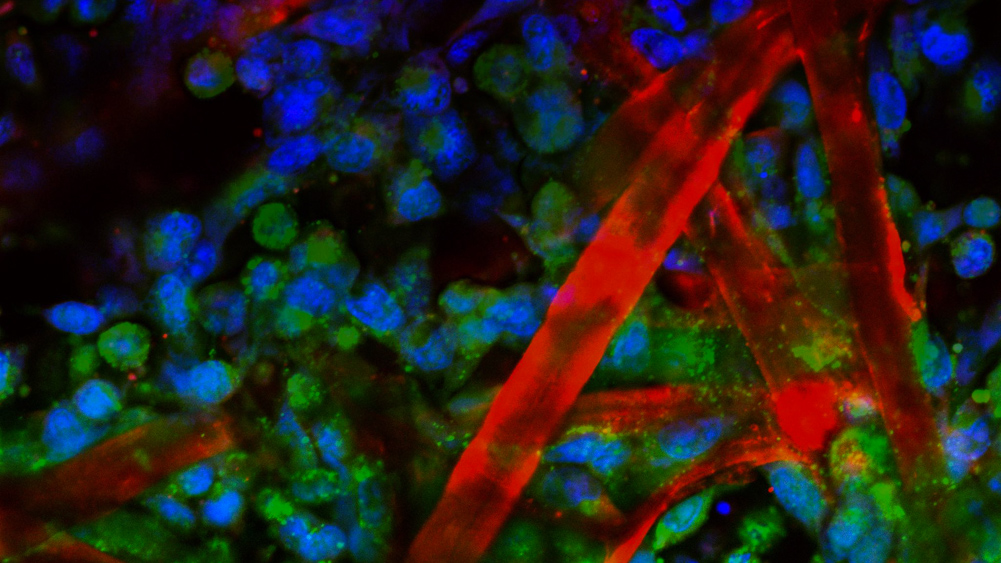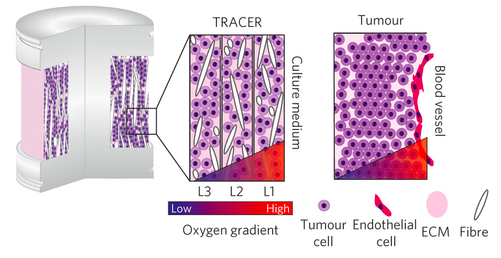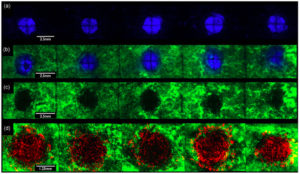
Tumour Microenvironment Engineering
Cancer drug discovery could significantly benefit from tissue mimetic platforms: the architecture of solid tumours is complex and heterogeneous, and current in vitro systems do not generate predictive data. For example, cellular metabolism is highly influenced by the local microenvironment, yet tumour cell metabolism is generally assessed in single cells grown on 2D plastic dishes or in suspension culture, which are both homogeneous microenvironments that differ significantly from those of a heterogeneous 3D tumour. This experimental approach is necessary because, unlike 3D tumours, 2D culture enables the rapid sample isolation necessary to ensure accurate metabolite characterization and much easier detailed characterization of the culture system. To address this, our team has developed a novel strategy, known as TRACER, to assemble 3D heterogeneous engineered tumours that can be rapidly disassembled into pseudo-2D structures for ‘snapshot’ data acquisition, allowing easy analysis and spatial mapping of cellular properties such as cell metabolism. We are also developing higher-throughput in vitro tumour platforms to study tumour cell invasion and response to therapy. In collaboration with a variety of partners at Princess Margaret Cancer Centre we are using our systems to explore the impact of microenvironmental factors such as hypoxia, stromal cells, and metabolites on tumor cell phenotype.
A three-dimensional engineered tumour for spatial snapshot analysis of cell metabolism and phenotype in hypoxic gradients., Rodenhizer D, Gaude E, Cojocari D, Mahadevan R, Frezza C, Wouters BG, McGuigan AP., Nat Mater. 2016 Feb;15(2):227-34.
Patterning cellular compartments within TRACER cultures using sacrificial gelatin printing. Xu B, Rodenhizer D, Lakhani S, Zhang X, Soleas JP, Ailles L, McGuigan AP. Biofabrication. 2016 Sep 15;8(3):035018.

